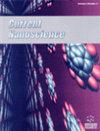Hydrothermally Synthesized Boletus Brucella-derived Carbon Quantum Dots as a Fluorescent Probe for the Detection of Vitamin B2
IF 1.5
4区 材料科学
Q4 BIOTECHNOLOGY & APPLIED MICROBIOLOGY
引用次数: 0
Abstract
Background:: In the paper, Boletus Brucella was used as carbon source material to prepare carbon dots (CDs) by one-step hydrothermal method. The CDs had high quantum yield and high photostability. Methods:: A range of characterization studies were conducted on CDs, and the results showed that the average particle size of CDs was 5 nm, emitting blue fluorescence. The optimal excitation wavelength was 337 nm, and the emission wavelength was 440 nm. Results:: Based on the static quenching, the fluorescence of CDs could be effectively quenched by VB2. Therefore, a highly sensitive and selective fluorescent probe for detecting VB2 was constructed. The CDs were successfully used to detect tablets, human blood, and urine. Conclusion:: The recovery rate of VB2 was 97.55~99.45%, and the relative standard deviation was 1.29~3.76 (n=3). conclusion: The recovery rate of VB2 was 97.55~99.45%, and the relative standard deviation was 1.29~3.76 (n=3).水热合成布鲁氏菌衍生碳量子点作为荧光探针检测维生素B2
背景:本文以布鲁氏杆菌为碳源材料,采用一步水热法制备碳点(CDs)。该CDs具有高量子产率和光稳定性。方法:对CDs进行了一系列表征研究,结果表明CDs的平均粒径为5 nm,发出蓝色荧光。最佳激发波长为337 nm,发射波长为440 nm。结果:在静态猝灭的基础上,VB2能有效猝灭CDs的荧光。为此,构建了一种高灵敏度、高选择性的VB2荧光探针。该方法成功地用于药片、人体血液和尿液的检测。结论:VB2的回收率为97.55~99.45%,相对标准偏差为1.29~3.76 (n=3)。结论:VB2的回收率为97.55~99.45%,相对标准偏差为1.29~3.76 (n=3)。
本文章由计算机程序翻译,如有差异,请以英文原文为准。
求助全文
约1分钟内获得全文
求助全文
来源期刊

Current Nanoscience
工程技术-材料科学:综合
CiteScore
3.50
自引率
6.70%
发文量
83
审稿时长
4.4 months
期刊介绍:
Current Nanoscience publishes (a) Authoritative/Mini Reviews, and (b) Original Research and Highlights written by experts covering the most recent advances in nanoscience and nanotechnology. All aspects of the field are represented including nano-structures, nano-bubbles, nano-droplets and nanofluids. Applications of nanoscience in physics, material science, chemistry, synthesis, environmental science, electronics, biomedical nanotechnology, biomedical engineering, biotechnology, medicine and pharmaceuticals are also covered. The journal is essential to all researches involved in nanoscience and its applied and fundamental areas of science, chemistry, physics, material science, engineering and medicine.
Current Nanoscience also welcomes submissions on the following topics of Nanoscience and Nanotechnology:
Nanoelectronics and photonics
Advanced Nanomaterials
Nanofabrication and measurement
Nanobiotechnology and nanomedicine
Nanotechnology for energy
Sensors and actuator
Computational nanoscience and technology.
 求助内容:
求助内容: 应助结果提醒方式:
应助结果提醒方式:


